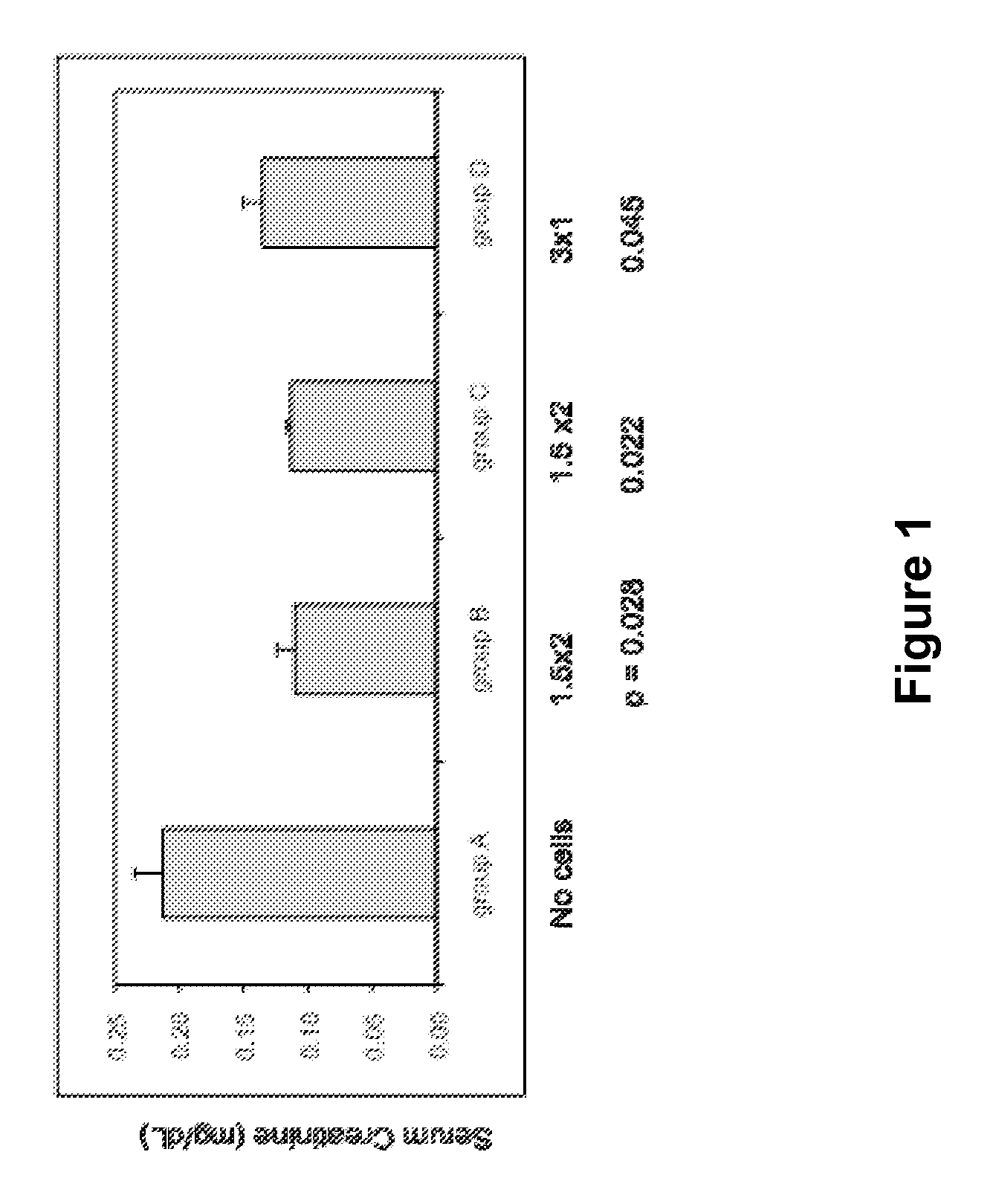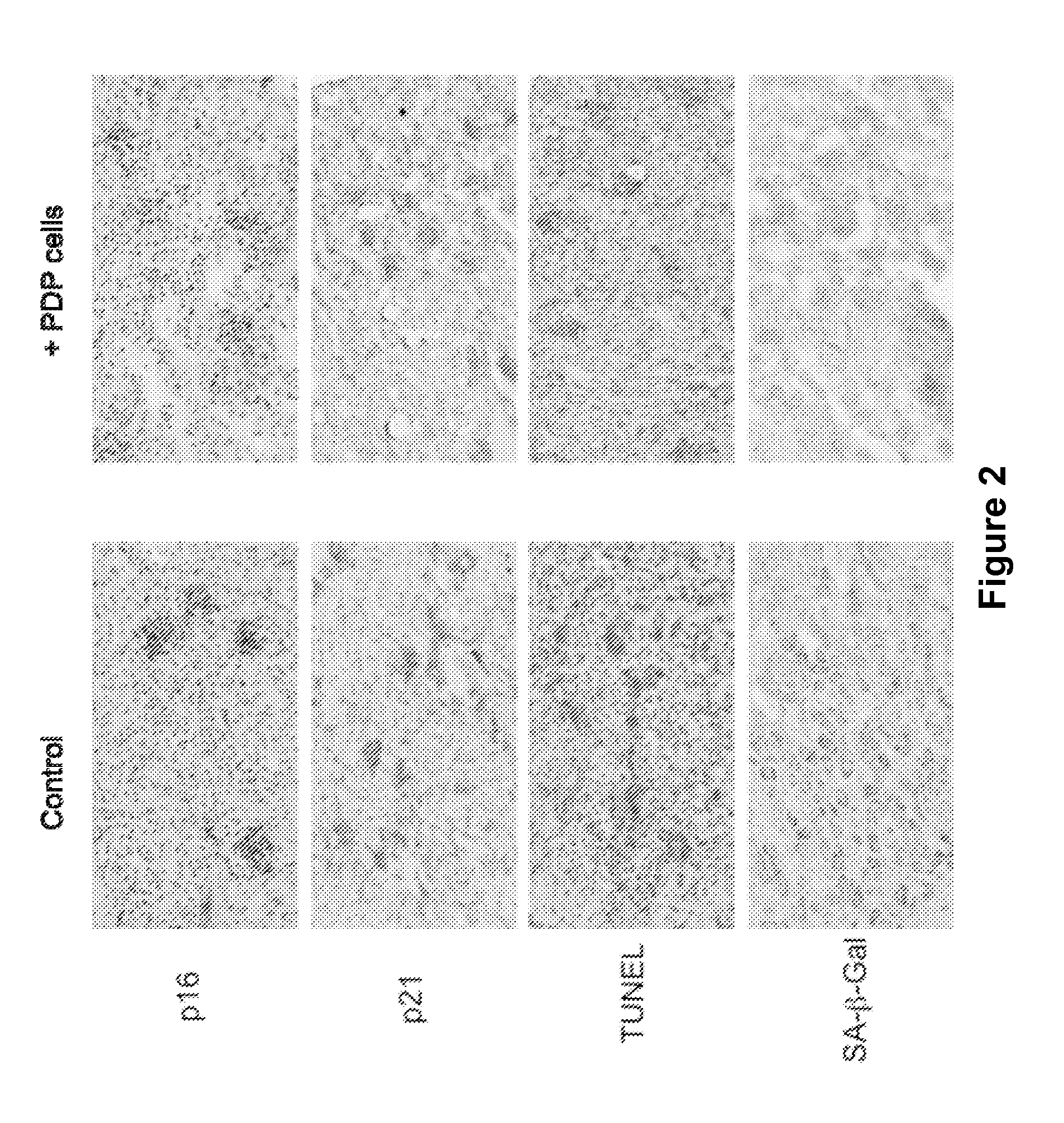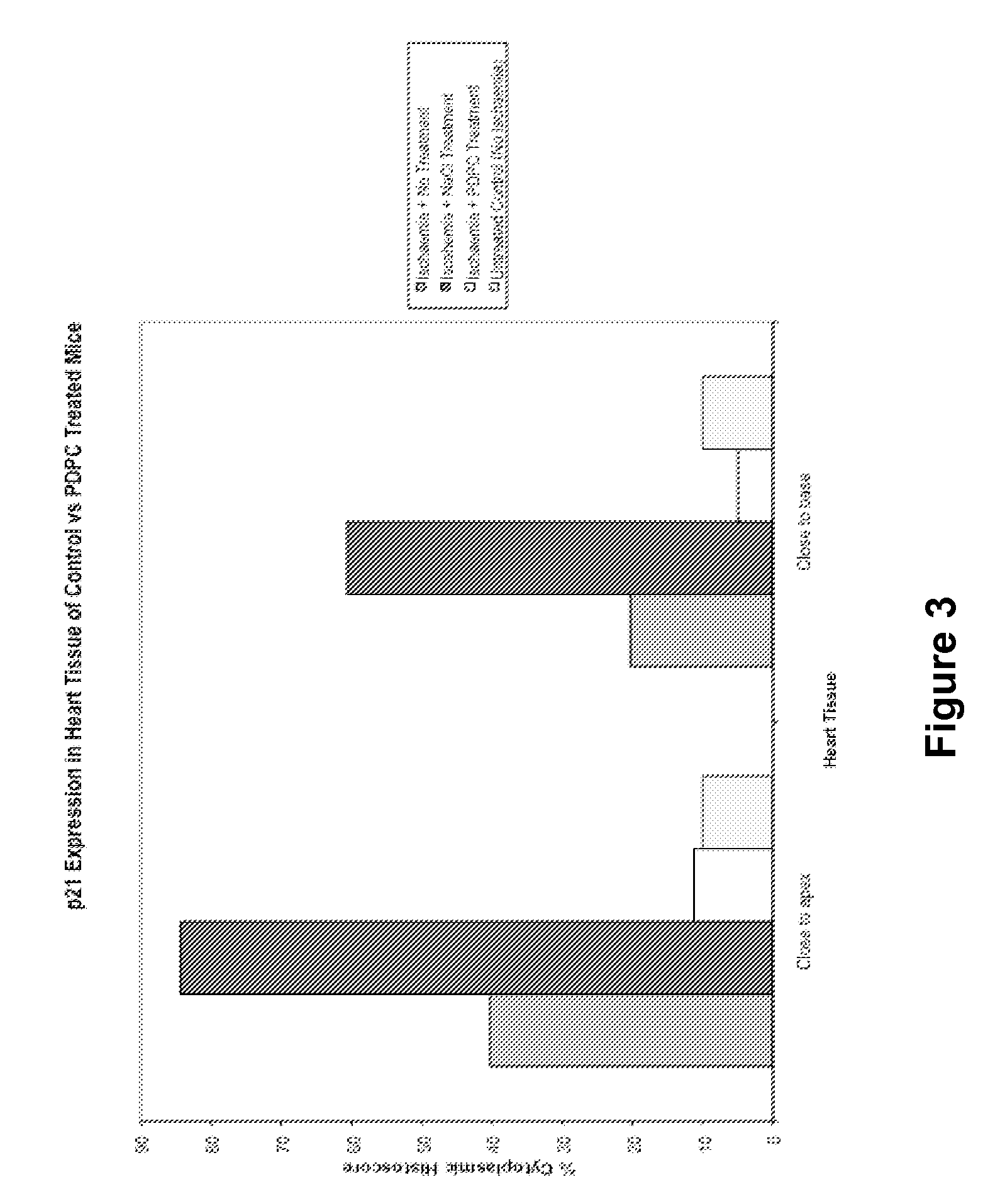Cellular and molecular therapies
a molecular therapy and cellular technology, applied in the field of cellular and molecular therapies, can solve the problems of ischemic ischemic ischemic damage, large acute tissue damage caused by ischemic, necrosis of brain tissue, etc., to reduce expression or activity, inhibit or reduce the stress of transplantation, and induce immune tolerance
- Summary
- Abstract
- Description
- Claims
- Application Information
AI Technical Summary
Benefits of technology
Problems solved by technology
Method used
Image
Examples
example 1
Stimulation of Repair by Pancreas-Derived Pathfinder Cell (PDPC) in a Kidney Ischemic Damage Model
[0201]The present Example demonstrates that pancreas-derived pathfinder cells (PDPCs) can stimulate repair in a model of renal ischemic reperfusion injury that has direct relevance to acute renal failure and decreased allograft survival in the context of kidney transplantation. (See, e.g., Hochegger et al. (2007) “p21 and mTERT are novel markers for determining different ischemic time periods in renal ischemia-reperfusion injury,” Am. J. Physiol. Renal Physiol., 292:762-768, the entire contents of which are herein incorporated by reference.) In this well-accepted model of renal cell damage, the extent of tissue damage depends on the length of the ischemic period.
Materials and Methods
[0202]Renal Ischemia Model
[0203]Renal ischemia was induced in mice using protocols as previously described (Hochegger et al. (2007)). C57BL / 6 male mice were maintained on a standard diet with water available...
example 2
Stimulation of Repair by PDPCs in a Cardiac Ischemic Damage Model
[0238]The present Example demonstrates that pancreas-derived pathfinder cells (PDPCs) can stimulate repair in an established model of cardiac ischemic damage with directed relevance to acute myocardial infarction (MI). (See, e.g., Metzler et al. (2002) “Plasma cardiac troponin T closely correlates with infarct size in a mouse model of acute myocardial infarction,” Clinica Chimica Acta, 325:87-90, the entire contents of which are herein incorporated by reference.) The level of plasma cardiac troponin T (cTnT) after the surgery performed to induce ischemia has been shown to be proportional to the size of the induced infarct. In this model, the extent of tissue damage depends on the length of the ischemic period.
Materials and Methods
[0239]Cardiac Ischemia Model
[0240]Cardiac ischemia was induced in mice using protocols as previously described (Metzler et al. (2002)). C57BL / 6 mice were anesthetized. A midline incision was m...
experiment 1
[0252]A small-scale pilot experiment was conducted with three mice injected intravenously with 1.5×106 rat PDPCs 24 hours after surgery. Clear benefits were observed as compared to ischemic controls that were injected with saline. Cardiac function in one PDPC-treated mouse returned almost to normal.
PUM
| Property | Measurement | Unit |
|---|---|---|
| diameter | aaaaa | aaaaa |
| diameter | aaaaa | aaaaa |
| diameter | aaaaa | aaaaa |
Abstract
Description
Claims
Application Information
 Login to View More
Login to View More - R&D
- Intellectual Property
- Life Sciences
- Materials
- Tech Scout
- Unparalleled Data Quality
- Higher Quality Content
- 60% Fewer Hallucinations
Browse by: Latest US Patents, China's latest patents, Technical Efficacy Thesaurus, Application Domain, Technology Topic, Popular Technical Reports.
© 2025 PatSnap. All rights reserved.Legal|Privacy policy|Modern Slavery Act Transparency Statement|Sitemap|About US| Contact US: help@patsnap.com



